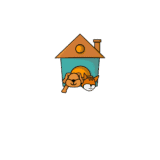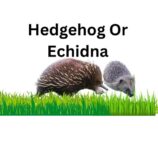Do you wish to learn more about Hedgehogs and Echidna?
With wild animals growing increasingly tamed, experimenting with new pets is not a terrible idea. As a pet lover, a lot of study and analysis, as well as hearing the thoughts and opinions of others, will go a long way towards assisting you in making the appropriate choice of pet to settle for. I’d like to share what I’ve learned with these two creatures and recommend my post How much does a baby hedgehog pet cost, which lists a range of domesticated hedgehogs as well as their pricing.
Let’s go
What Do Echidnas And Hedgehogs Have In Common
- Being predominantly a predator of invertebrates, such as ants, earthworms, and other slow-moving animals, and being prickly as a defense against being eaten.
- Both hedgehogs and echidnas have spines. In the form of hardened hairs (Quills), the two species have created a static protection system against predators.
- Both are mammals
- They are both nocturnal animals, which means they are most active at night
- They both can be infected by fleas
- They both are solitary animals
The apparent resemblance between hedgehogs and echidnas is due to convergent evolution: because they both occupy almost the same niche in the environment and endure similar pressures, they developed similar body designs independently of each other.
Is Echidna A Pet
Keeping an Echidna as a pet is a terrible idea in general because there are a lot of questions that you have to answer:
Can you locate a vet who will treat one? Can you locate someone who is willing to study enough after work to understand how to treat one?
Several characteristics are shared by all anteater species. They all have long, powerful claws for digging up ant nests and termite mounds. Because you are now feeding it, that behavior will not go away. It will continue to dig and break everything apart. Except now it’ll be burrowing into and ripping up your flooring, walls, and furniture.
It will dig its way out of a pen outdoors unless you spend several thousand dollars on an echidna-proof pen.
You can (and will have to) feed it things other than ants, but you will have to make new food every day, experiment with that food to find a decent balance to keep it healthy, and attempt to discover a blend that will suit it involves experimenting with its life.
Most anteater species perish after a couple of years due to digestive problems.
In effect, you would be taking an animal and denying it everything it requires to be healthy, so it may die of terrible gastrointestinal troubles in a few years.
It’s important to note that echidnas are not widely kept as pets and are legally protected in many locations, so it’s better to leave them alone in their natural habitat.
What Is The Distinction Between A Hedgehog And A Echidna
Echidnas do not have teeth: They lack teeth but compensate with their tongues. Echidnas have small lips and toothless jaws at the end of their thin snouts. They prey on ants, termites, worms, and insect larvae using their long, sticky tongues. (The technical name Tachyglossus, which means “fast tongue,” comes from the short-beaked echidna’s habit of rapidly darting its 6-inch tongue in and out of its mouth to suck up insects. Echidnas use hard pads on the roof of the mouth and the back of the tongue to break down food because they lack teeth. Hedgehogs on the other hand have teeth
Gestation
Hedgehogs have 3 to 4 young following a 35 to 58-day gestation period They are placental animals like us, giving birth to fully formed live offspring and nursing them via nipples.
echidnas deposit one egg 22 days after mating, which they tuck into their pouch. After 10 days, the egg hatches, and the child remains in the pouch for another 45 to 55 days. The female then digs a nursery burrow and leaves the infant there, coinciding with the spine’s growth. The young of a hedgehog is called a hoglet
Echidnas (of which there are several species) are monotremes, or more accurately, a therapsid, which is a mammal-like reptile. They do exhibit the core mammal feature: Echidnas typically lay one egg each year and can have only one young at birth. It is about the size of a grape and is kept in the female’s abdominal fold after she lays her eggs. females have mammary glands and feed their young with milk after hatching (they lack nipples, but release milk in a pouch through open gland ducts, which the young lap up). The young of an echidna is called puggle
Habitat
A hedgehog pet can dwell in diverse regions on all continents of the world: Africa, Asia, and all the other continents of the World whereas the groundhog lives in North America and also in some places in Canada. They are only found in Australia and are considered endangered. Echidnas may also be found in New Guinea, mainland Australia, Tasmania, King Island, Flinders Island, and Kangaroo Island.
This means that hedgehog is widely distributed and stand that chance to also have Veterinary doctors who can take good care of them. This is not applicable in the case of Echidna
Longevity
A hedgehog pet has an average life span of 8 to 10 years while an echidna has a longevity above 10 years and can live much longer in the wild This means that the Echidna has a longer life span than the hedgehog. I recommend reading my post on How Long Pet Hedgehog Lives if you want to offer your hedgehog the best life possible. We’d all like to spend time connecting with our pets, but death is unavoidable. I also recommend that you read my piece Hedgehog Pets Death, which will provide you advice on how to cope if your pet dies.
Diet
Depending on the species, echidnas eat ants, termites, or earthworms. Short-beaked echidna consumes ants and termites, but long-beaked echidna consumes worms and insect larvae. Echidnas only eat ants and termites with a particular interest in queen’s ants and nymphs; while they search through ant and termite nests, they eat a huge quantity of nest debris and dirt, which shows majorly in their droppings Its favorite meal is termites and ants, which is why the animal has the unique name the spiny anteater
Hedgehogs are omnivores, meaning they consume both plants and animals and eat almost everything. They also consume primarily insects which can include beetles, worms, and protein like eggs and meat. If you keep hedgehogs as pets, it is best to give them insects you buy from pet stores so that they will not ingest insects that can be harmful to them for the best food and drinks for your hedgehog pets please read What Do Hedgehogs Eat and Drink
Class
Echidna falls under the subclass of mammals known as monotremes. All monotremes have milk-producing glands (sweat glands?), are warm-blooded, and have a four-chambered heart. Scientists regard these as mammal features. The eggs of monotremes are leathery. These are perceived as reptilian characteristics. Hedgehogs are insectivores and are members of the Eulipotyphla order, which also contains shrews and moles. This means that they both come from different animal classes which have their unique characteristics. For more information on hedgehog types kindly read Types of Hedgehogs which gives various personalities of this pet as well as how to take good care of them within your budget
Behavior
Echidnas may aestivate, which is a condition of dormancy comparable to hibernation that occurs in reaction to extreme heat. They could also seek shade or tiny puddles of water to cool down, a hedgehog does not have this behavior
One of the hedgehog’s unique behaviors is self-anointing, which happens when they spit on themselves, the echidna does not exhibit this behavior
They both like to dig burrow into the ground. The Echidna burrows deep in the ground particularly when it perceives danger while the hedgehog burrows but stays more on the surface of the earth and does not burrow deep as the Echidna
Echidna experience Torpor, which is akin to but not as profound as hibernation, is a condition that echidnas may undergo. Torpor causes a reduction in metabolic rate and a decrease in body temperature, helping them to preserve energy and water during times of high heat or food shortage. Hedgehog hibernates fully. For more information on this kindly read Hedgehog Winter Care
Physical Appearance
Echidna that is short-beaked, is 35 to 50 cm long and can weigh 2.5 to 7 kg. The long-beaked echidna are larger and may grow to be 1 m long and weigh up to 10 kg. The weight of a hedgehog is not as great as that of an Echidna. The average weight of an adult hedgehog is between a 1pound and 1.5 pounds while the average weight of a groundhog is between 12 pounds and 16 pounds.
The echidna’s color can change based on where it lives. It has a light brown in the north but has a black color in the south while hedgehogs have a variety of colors from white, black, orange-brown
Species
There are four varieties of echidnas, and they may be found on the mainland, in Tasmania, and in New Guinea, as well as on King Island, Flinders Island, and Kangaroo Island.
There are four types of beaks: the short beak, the eastern long beak, the western long beak, and Sir David’s long beak.
Hedgehogs come in a wide range of species from Europe to Africa. Pygmy, Albino, Cinnamon, as well as Salt & Pepper, come in a variety of flavors. For the best color, kindly read my post Discover the different colors of Hedgehog pets. They differ not just in appearance, but also in their daily habits
Conclusion
Apart from sharing the same cladistics class of Mammalia, these two creatures have little commonalities at best and hence share some characteristics, but the structure of their faces, color, and the length and texture of their prickles all differ significantly. Hedgehogs have a better chance kept as a pet than echidnas because of their acceptance as pets and are legally accepted as well. I propose that you read my post Are Hedgehog Pets Easy to Care Of, which will provide you with the best ideas for providing the greatest care for your pet as well as connecting with your companion.

